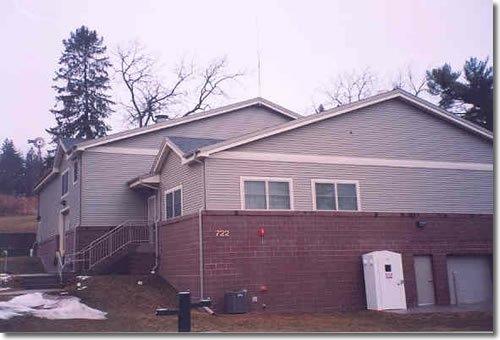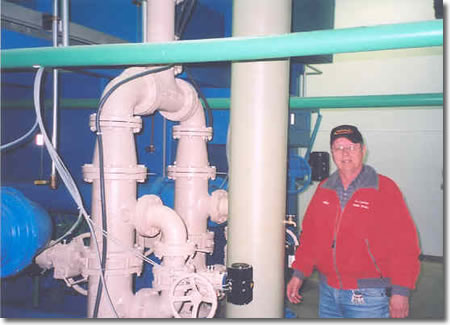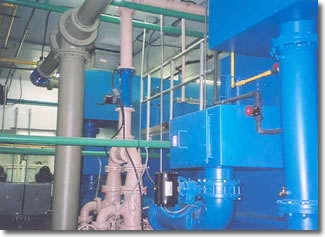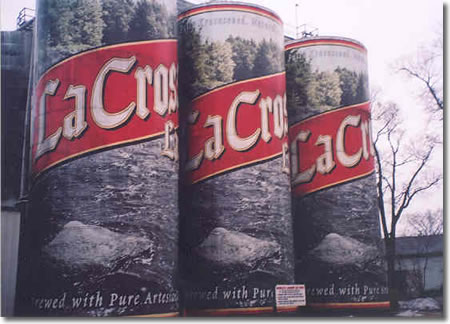Drinking Water Protection
- Drinking Water Protection Home
- About Us
- A-Z Index of Contaminants in Water
- Community Public Water Supply
- Drinking Water Grants and Loans
- Drinking Water Institute
- Drinking Water in Schools and Child Cares
- Drinking Water Revolving Fund
- Laws and Rules
- Noncommunity Public Water Supply
- Source Water Protection
- Water Operator and Certification Training
- Drinking Water Protection Contacts
Related Topics
- Annual Reports
- Drinking Water Risk Communication Toolkit
- Drinking Water Protection External Resources
- Fact Sheets
- Forms
- Invisible Heroes Videos: Minnesota's Drinking Water Providers
- Noncom Notes Newsletter
- Sample Collection Procedures (videos, pictures, written instructions)
- Waterline Newsletter
Related Sites
- 10 States Standards
- Clean Water Fund
- Health Risk Assessment – Guidance Values and Standards for Water
- Minnesota Well Index
- Water and Health
- Wells and Borings
Environmental Health Division
La Crescent Plant Knocks Down Radium
From the Summer 2009 Waterline
Quarterly Newsletter of the Minnesota Department of Health Public Water Supply Unit, Waterline
A complete list of feature stories can be found on the Waterline webpage.
 |
A decision by the U. S. Environmental Protection Agency (EPA) in 1997 left a number of Minnesota public water systems in a state of limbo. Six years before, the EPA had proposed revisions to the radionuclide rule, the most significant being a loosening of the maximum contaminant level (MCL) for radium 226 and radium 228, which are naturally occurring minerals that are commonly found in Minnesota groundwater that is drawn from deeper bedrock aquifers. The MCL for radium at that time was 5 picocuries/liter (pCi/L), but the proposed revision would have raised the MCL to 20 pCi/L.
EPA indicated to the Minnesota Department of Health (MDH) that during the time frame between when the rule revision was proposed in July of 1991 and when it became final, MDH should not require any corrective actions from Minnesota water systems that complied with the proposed MCL of 20 pCi/L.
However, in December of 1997 the EPA announced that the MCL for radium would be finalized in 2000 and would likely stay at 5 pCi/L. The decision affected 13 community water systems in the state, which had radium levels under 20 but above 5 pCi/L.
Among the systems was La Crescent, a city of 5,100 on the bluffs of the Mississippi River in southeastern Minnesota, directly across the river from La Crosse, Wisconsin. With three wells, ranging in depth from 550 to 707 feet, drawing water from the Eau Claire-Mount Simon aquifer, the city had radium levels from 7 to 9 pCi/L.
“We were fine,” said Mike Albrecht, the utility maintenance supervisor and a native of LaCrescent who has worked for the city since 1973. Then came the EPA announcement that the MCL of 5 pCi/L would be enforced.
 |
| Mike Albrecht in the new LaCrescent water treatment plant. |
La Crescent entered into a compliance agreement with MDH and began exploring its options. A search for a radium-free source resulted in a test well being drilled into a shallow alluvial aquifer. Although the water contained no radium, it had nitrate and volatile organic chemicals. Other alternatives, deemed too expensive or impractical, included treating river water and buying water from another city.
La Crescent also tried a pilot treatment plant using electrodialysis reversal before finally settling on a new plant that would use preformed hydrous manganese oxides (HMOs) with multi-media gravity filters. An added advantage of the treatment process was that, in addition to reducing radium levels, the plant would cut down the iron problems.
“We had some iron issues with our deep wells,” said Albrecht, who added that they tried to deal with rust problems by flushing the system but that it was a “constant battle.” In the 1990s, they began adding a polyphosphate to the water, which Albrecht said helped a lot. In addition to the polyphosphate, the treatment at the time consisted of the addition of chlorine and fluoride.
Construction on a treatment plant began in 2007, and two of the wells have been connected to it (the third remains as an emergency backup well although it could be connected to the plant in the future). TonkaZorb 3% (the preformed HMO) is added to the incoming water, which is then split before going through one of the two filters, each of which has a capacity of 500 gallons per minute. Albrecht said that the TonkaZorb helps iron and manganese adhere to the radium, which is then removed simultaneously with the iron and manganese.
The treated water goes into a 50,000 gallon clearwell beneath the plant and then into the distribution system, which has two pressure zones. The low-pressure zone has the 800,000-gallon Stoney Point Reservoir for storage. In the last 20 years development on the bluffs led to the construction of the 500,000-gallon Crescent Hills Reservoir to serve the high-pressure zone.
 |
 |
| The two gravity filters and pipes in the new water treatment plant in La Crescent. | |
Delays because of weather and other issues pushed back the completion by a few months, but the treatment facility went on-line in September 2008. Samples taken in December by MDH engineer Paul Halvorson indicated that the plant was working well. Radium levels are now under the detection limit of 1 pCi/l. In addition, iron, which had been at 0.5 parts per million (ppm), is down to 0.1 ppm.
The city raised water rates to offset the total project cost, which, including pipelines from two of the wells into the plant, was approximately $4 million.
At the same time La Crescent was building a new water plant, the city was getting out of the wastewater business. With their wastewater plant due for an upgrade, La Crescent decided instead to send their sewage under the river to La Crosse, which had added capacity in anticipation of the continued growth of its brewery. However, the glory years of brewing did not return, so La Crosse was able to take La Crescent’s wastewater, and a directionally bored sewage line was constructed under the river, connecting the two cities. La Crescent paid for the piping up to the Wisconsin state line and now pays La Crosse to process its wastewater.
 |
| The storage tanks of City Brewing Company, which hold beer, are decorated to make them the “World’s Largest Six-Pack.” However, the brewing business in La Crosse, Wisconsin, has declined in recent years, enabling the city to receive wastewater from La Crescent, Minnesota, across the river. |